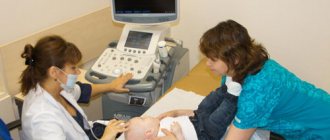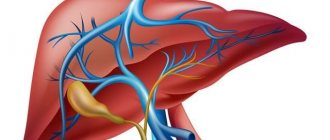Home — For the public
- Map of medical organizations
- Vaccination
- Clinical examination
- Fluorography
- Addresses and opening hours of clinics
- Emergency rooms
- Oncology
- Where to take an HIV test
- Healthy child's office
- Services
- Prevention of CVD
- Disease Prevention
- World Patient Safety Day
- Newspaper "Medical News"
- specialist
- School of Health
— Disease prevention
- HIV infection
- All about vaccination
- All about proper nutrition
- Hepatitis
- Flu
- Dementia
- Schoolchildren's health
- STD
- Tick-borne encephalitis
- Whooping cough
- Measles
- Legionellosis
- Meningococcal infection
- Oncology
- Acute intestinal infection
- Pediculosis
- First aid
- Pneumococcal infection
- Pneumonia
- Prevention of rabies
- Dependency Prevention
- Rotavirus infection
- Diabetes
- Cardiovascular diseases
- Injuries
- Tuberculosis
- Tularemia
- Physical activity
- Obstructive pulmonary disease
- Exotic infections
- Ecology
- Why is swimming in ponds dangerous?
— Cardiovascular diseases — Vascular diseases of the brain
Even at rest, the human brain consumes up to 25% of the oxygen entering the body; To ensure its operation, about 15% of the total volume of circulating blood is required. Vascular diseases, narrowing of their lumen leads to hypoxia and neuron death.
People without special education cannot always recognize the first symptoms of cerebrovascular accident and miss the time when therapeutic or preventive care is most effective.
Blood supply to the brain
Four large arteries are responsible for the transport of oxygen and nutrients to the brain tissues: two internal carotid and two vertebral. The vertebral arteries are responsible for supplying blood to the brain stem. At the base of the brain they merge into the basilar artery.
Each internal carotid artery is divided into anterior and posterior. These vessels supply the frontal, temporal, parietal, and occipital lobes.
At the base of the brain, the internal carotid branches, the basilar artery and the branches connecting them form a closed circle of Willis. It is named after the English doctor Thomas Willis. This anatomical formation ensures the redistribution of blood and the preservation of nutrition of parts of the brain during blockage of blood vessels. The outflow of blood from the cranial cavity occurs through the jugular veins.
Brain diseases occur when large and small vessels are damaged. Depending on the cause, symptoms occur acutely and require immediate medical attention or develop gradually, slowly leading to a deterioration in a person's quality of life.
The main causes of arterial damage include atherosclerosis and hypertension. In the first case, plaques form on the inner surface of the vascular wall, narrowing the lumen of the arteries. They have a thin cover and contain lipids inside. When such plaques rupture, blood platelets adhere to the damaged surface, leading to blockage of the lumen (thrombosis). The provoking factor is often vasospasm.
Arterial hypertension also damages the walls of blood vessels: they become denser, and areas of expansion (aneurysms) appear. These vulnerabilities can cause arteries to rupture or become blocked.
A condition in which small cerebral arteries are affected and the blood supply to the brain is affected is called discirculatory encephalopathy. Nerve cells do not receive enough oxygen and nutrients and die. A developed network of arteries cannot solve this problem. The process is not limited to any one area of the brain; lesions are found in various parts.
What is vasculitis?
Vasculitis is a group of diseases characterized by the development of inflammation of the walls of blood vessels. This inflammation begins due to an impaired immune response. The cause may be a past infection or allergy. Inflammation can affect small, medium, and large vessels. Because of it, blood circulation and blood supply to individual organs are disrupted, which can cause complications. Without treatment of vasculitis, necrosis of the vessel walls (death of their tissue), bleeding, and ischemia (impaired blood flow) begin. Both children and adults can get vasculitis. The disease can be primary (when inflammation of the walls of blood vessels is the only manifestation without an apparent cause) or secondary. With secondary vasculitis, the walls of blood vessels become inflamed due to other diseases (infectious, oncological, rheumatic).
Risk factors for cerebrovascular diseases
Assessing the likelihood of vascular damage, neurologists and cardiologists say that some people are more predisposed to this group of diseases. Risk factors include such conditions, diseases and lifestyle features as:
- low physical activity;
- hypertonic disease;
- heart disease;
- diabetes mellitus of any type;
- hypercholesterolemia;
- smoking;
- regular stress, psycho-emotional stress;
- frequent drinking of alcohol.
In addition, the risk group includes people with a family history of hypertension, heart attack, stroke in close relatives.
Fats
Fats (primarily of animal origin) increase the amount of low-density lipoproteins (LDL), triglycerides and cholesterol in the blood, and arterial plaques form.
Cardiologists recommend limiting your daily intake of animal fats if you have high cholesterol levels or avoiding them as much as possible if you have diabetes or heart disease.
The best option is to replace them with healthy fats of plant origin - flaxseed oil, olive oil.
First of all, this concerns:
- fat milk, sour cream and cream,
- fatty varieties of cheese,
- butter,
- fatty meats (lamb, pork),
- sausages, lard and other smoked meats and pickles,
- canned food, stewed meat, ham, etc.
Symptoms
The first signs of vascular damage to the brain may appear already at a young, working age. In this case, patients tend to ignore painful symptoms and not consult a doctor. And even when visiting a therapist or neurologist, the condition often remains unrecognized.
Among the early signs:
- absentmindedness;
- memory loss;
- fatigue;
- decreased performance;
- headache;
- noise in the head;
- episodes of dizziness;
- weather sensitivity.
Signs of circulatory problems may appear one by one. Young patients often associate them with overwork, as they believe that it is too early for them to be sick.
Over time, negative lifestyle factors lead to a deterioration of the condition - normal activities begin to suffer, severe weather sensitivity worries, and a person’s character “deteriorates.”
But sometimes the situation changes dramatically. In such cases, they speak of acute cerebrovascular accidents. How to recognize typical vascular diseases?
Encephalopathy
This diagnosis has already become “the talk of the town”: it is used to scare patients with hypertension, and it is “gifted” to old women who make scandals in pharmacies, clinics and on the street. And no wonder. The first symptoms of the disease are often noticeable behavioral, emotional and volitional disturbances. Thus, patients experience:
- irritability;
- emotional lability;
- sleep disorders;
- fatigue;
- depressive symptoms.
Relatives may notice that such a relative has become angry, sensitive to changes in weather, and his personality traits have become “sharpened.” Sentimental people become whiny, punctual people become pedantic, thrifty people become frankly stingy.
Over time, productivity begins to suffer: memory and attention deteriorate. The person becomes absent-minded, “constantly writes down so as not to forget,” but still forgets. Episodes of inappropriate, rude behavior are possible.
Discirculatory encephalopathy progresses, the course can be uniform or with sudden episodes of deterioration. It cannot be cured, you can only slow down the development of the disease. Severe encephalopathy is characterized by the development of dementia. Such a patient has completely lost self-care skills, in some cases cannot control physiological functions, and needs constant care and supervision.
Osteochondrosis often provokes or intensifies the manifestations of encephalopathy, as it impairs blood flow to the brain due to narrowing of the lumen of the vertebral arteries. Slow personality changes due to vascular damage also occur in systemic diseases accompanied by vasculitis.
Stroke
Stroke is one of the most common causes of death in people around the world. In fact, this is an acute circulatory disorder in the cerebral vessels, in which the entire brain lesion dies. According to the mechanism of development, there are 2 types of strokes: ischemic and hemorrhagic.
In ischemic stroke, the lumen of the vessel is blocked. Brain cells are very sensitive to hypoxia. At first, they try to provide for themselves through anaerobic glycolysis; within a few hours, the pathological processes are reversible. But decay products gradually accumulate, and the pH of the tissue changes to the acidic side. Neurons swell, their membranes cease to perform their functions and are destroyed. The final formation of the stroke focus occurs within 2-7 days; specialist assistance is most effective during the first 3-6 hours.
With a hemorrhagic stroke, the integrity of the vessel is compromised. Blood pours under the membranes, into the parenchyma (tissue) of the brain, and breaks into the ventricles. The cause of such a catastrophe is changes in the structure of the vascular wall and fluctuations in blood pressure. Congenital or acquired cerebral aneurysm can cause sudden death or severe disability. Until it reaches a large size, there is no pressure on the brain, and there are no clinical manifestations. The condition may worsen acutely, the patient is concerned about:
- headache;
- nausea;
- double vision;
- convulsions;
- disturbances of consciousness.
A special place is occupied by transient ischemic attacks, or as they say - micro-strokes. The name “microstroke” is unscientific; it reflects the reversibility of what occurs in the patient’s tissues. Some people who have had ischemic attacks are not aware of this. Thus, patients are greatly surprised to learn about them when describing a routine computed tomography or magnetic resonance imaging. (“I thought it was a simple hypertensive crisis!”)
Symptoms and prognosis for cerebrovascular accidents depend on the volume and location of the lesion. It is worth recalling obvious signs, the detection of which requires immediate medical attention:
- severe headaches, often with dizziness, tinnitus;
- asymmetry of the face, it is impossible to raise your hands, smile, show your teeth;
- weakness, numbness in the arms and legs, unsteadiness of gait;
- violation of pronunciation and perception of addressed speech;
- nausea and vomiting;
- disturbance, loss of consciousness.
Pathogenesis of vasculitis
Vasculitis develops due to a failure of immune mechanisms, but the exact causes of the disease have not been identified. The main hypothesis assumes that the nature of the disease is multi-etiological, associated with many factors. These include:
- acute or chronic bacterial or viral infections;
- allergy. A severe allergic reaction to drug components or food can cause immune failure;
- complication of vaccination. If after vaccination the immune response is impaired, vasculitis may occur. Such complications are very rare;
- severe or prolonged effects of stress, hypothermia or overheating, injuries.
Under the influence of these factors, the production of pathogenic immune complexes begins. Normally, they attack the pathogen, but due to an immune failure, the attack is directed at the body’s cells. Immune complexes attach to the walls of blood vessels, damage them and provoke inflammation.
Figure 1. The difference between a healthy vessel and one affected by vasculitis. Source: sl.smithhealthcentre.com
Diagnosis of vascular diseases of the brain
To “take care of your health and get examined,” you don’t need to wait until you reach pre-retirement or retirement age - many vascular disorders begin to develop in young people. What do we have to do? It is necessary to undergo regular preventive examinations, even if “nothing bothers you,” and do not be embarrassed to “bother” the doctor with complaints about a change in condition.
Diagnosis of cerebral vascular pathology includes:
- Analysis of patient complaints. You should tell your doctor even such “minor” symptoms as: fluctuations in blood pressure, headaches, dizziness, forgetfulness, and weather sensitivity.
- Anamnestic information: age, presence of risk factors, rate of development of symptoms, concomitant diseases (hypertension, diabetes, systemic and rheumatic lesions).
- Examination of the patient with analysis of neurological symptoms, examination of the fundus. Body mass index assessment.
- Laboratory data: blood sugar, blood lipid profile, coagulogram, platelet count assessment. CSF analysis to detect hemorrhagic stroke.
- Instrumental diagnostic methods: CT or MRI of the head, scanning of the vessels of the head and neck, ECG.
Trans fats
We are talking about artificial fat that contains partially hydrogenated oil. Trans fats improve taste and extend shelf life, but they clog your blood vessels.
Main sources: deep-fried foods, fast food, popcorn, frozen pizza, margarine, cakes, cookies and more.
How to avoid:
- Read the ingredients on the label carefully. If the words “partially hydrogenated” appear anywhere, return the item to the shelf.
- Look for healthy restaurants, don't eat fast food.
- If you still eat in a cafe or restaurant, then order steamed, grilled, baked foods.
Definition
Vascular diseases are a group of diseases associated with disorders in the human circulatory system.
Vascular diseases are a common cause of death and disability in our country. They affect older and older people, smokers and people leading a sedentary lifestyle, but ailments also occur in young active people. The human cardiovascular system is designed in such a way that the condition of the blood vessels affects the health of the entire body. Arteries deliver oxygenated blood to organs and tissues, and veins carry blood back to the heart. If stenosis or occlusion occurs in a section of this interconnected system, this will negatively affect the condition of the whole organism.
Causes
Inflammation of the walls of blood vessels begins due to autoimmune disorders, in which antibodies are produced against the cells of one’s own body. The exact causes of primary vasculitis have not been established. Secondary vasculitis develops against the background of infectious or oncological diseases, as a rare complication of vaccination, after overheating or hypothermia, or sunburn.
Other possible causes include allergies to medications. More than 150 drugs have been identified that can provoke the disease. These include some antibiotics, analgesics, radiopaque agents, serums, vaccines, as well as iodine preparations, B vitamins and other drugs. Allergies, autoimmune failure and the development of vasculitis do not always occur after taking them. The risk of such complications is determined by the individual reaction to the components of the drug. Therefore, it is important that all medications are selected by a doctor. You do not need to choose your own antibiotics or antihistamines.
Sources
- Sharma SK., Sharma AL., Mahajan VK. Ophthalmic manifestations in patients with collagen vascular disorders: a hospital-based retrospective observational study. // Int Ophthalmol - 2021 - Vol - NNULL - p.; PMID:33830371
- Sumin AN., Bezdenezhnykh NA., Bezdenezhnykh AV., Artamonova GV. Cardio-Ankle Vascular Index in the Persons with Pre-Diabetes and Diabetes Mellitus in the Population Sample of the Russian Federation. // Diagnostics (Basel) - 2021 - Vol11 - N3 - p.; PMID:33800222
- Liberale L., Ministrini S., Carbone F., Camici GG., Montecucco F. Cytokines as therapeutic targets for cardio- and cerebrovascular diseases. // Basic Res Cardiol - 2021 - Vol116 - N1 - p.23; PMID:33770265
- Ji C., Pan Y., Xu S., Yu C., Ji J., Chen M., Hu F. Propolis ameliorates restenosis in hypercholesterolemia rabbits with carotid balloon injury by inhibiting lipid accumulation, oxidative stress, and TLR4/NF- κB pathway. // J Food Biochem - 2021 - Vol45 - N4 - p.e13577; PMID:33729587
- Guendouz C., Quenardelle V., Riou-Comte N., Welfringer P., Wolff V., Zuily S., Jager L., Humbertjean Selton L., Mione G., Pop R., Gory B., Richard S. Pathogeny of cerebral venous thrombosis in SARS-Cov-2 infection: Case reports. // Medicine (Baltimore) - 2021 - Vol100 - N10 - p.e24708; PMID:33725828
- Takei S., Homma Y., Matsuyama R., Endo I. Hepatectomy for liver metastasis from rectal cancer in a patient with mitochondrial disease. // BMJ Case Rep - 2021 - Vol14 - N2 - p.; PMID:33547122
- Hesamirostami M., Nazarian R., Asghari H., Jafarirad A., Khosravi A., Nouranibaladezaei S., Radfar A. A case series of concomitant burn and COVID-19. // Burns Open - 2021 - Vol5 - N1 - p.34-38; PMID:33521415
- Rimondi E., Marcuzzi A., Casciano F., Tornese G., Pellati A., Toffoli B., Secchiero P., Melloni E. Role of vitamin D in the pathogenesis of atheromatosis. // Nutr Metab Cardiovasc Dis - 2021 - Vol31 - N1 - p.344-353; PMID:33500110
- Schade D.S., Burchiel S., Eaton R.P. A Pathophysiologic Primary Prevention Review of Aspirin Administration to Prevent Cardiovascular Thrombosis. // Endocr Pract - 2021 - Vol26 - N7 - p.787-793; PMID:33471648
Consequences and complications
Without treatment, vasculitis becomes a life-threatening disease. It can cause pulmonary, intestinal and intracranial bleeding, thrombosis, renal or liver failure, myocardial infarction, and aneurysms. Possible complications include:
- intestinal obstruction;
- peritonitis;
- pancreatitis;
- heart attacks, thrombosis, ischemia of tissues and organs;
- perforation of intestinal and stomach ulcers;
- neuritis, cerebral disorders.
Even with timely treatment of vasculitis and persistent remission of the disease, consequences are possible, including chronic diseases of the kidneys, liver, digestive organs, breathing, hearing loss, vision loss and others. In order to most effectively restore normal health and quality of life, long-term systemic therapy is carried out.
Diagnostic procedures
Diagnosis of vascular pathologies is carried out according to a standard scheme, including a conversation with the patient, study of the clinical picture, collection of anamnestic data, general examination and physical examination. These techniques provide only a general idea of the existing pathology. To make an accurate diagnosis and prescribe adequate treatment, the results of laboratory and hardware tests are required.
Comprehensive laboratory and instrumental examination of the patient:
- General clinical and biochemical blood tests - detection of anemia and inflammatory changes,
- Lipidogram - the ratio of lipid complexes in the blood,
- Coagulogram - determination of blood clotting indicators, tendency to thrombosis or bleeding,
- Determination of hormonal status,
- ECG and EchoCG - identifying the structural and functional state of the heart muscle,
- Contrast angiography, cardiac coronography - assessment of the performance of blood vessels, their location, affected areas, developmental anomalies,
- Duplex scanning includes ultrasound and Dopplerography of blood vessels. Ultrasound visualizes veins and arteries, reflecting the anatomy and existing disorders. Doppler determines the speed and intensity of blood flow.
- Tomography – obtaining a three-dimensional, layer-by-layer image in several projections of any vein or artery.
The results of such an examination make it possible to accurately determine the cause of vascular dysfunction and select a treatment regimen for the patient. To avoid various problems with blood vessels, they need to be strengthened, cleaned and hardened.
Treatment of vascular diseases
Specialists treat peripheral vascular diseases based on the severity of their clinical manifestations and the type of damage (blockage, inflammation). During the consultation, the doctor will necessarily include in the treatment plan recommendations on proper nutrition and a healthy lifestyle, which will allow you to slow down the development of many different diseases in the early stages.
Treatment of vascular diseases includes:
- prescribing medications to the patient. Based on the examination results, the doctor selects one of the specific treatment regimens, sets the dose of the drugs and determines the duration of their use. The following medications can be used in the treatment of vascular diseases:
- medications that affect cholesterol levels;
- anti-inflammatory drugs;
- drugs that improve tissue metabolism and microcirculation, antispasmodics;
- drugs with antiarrhythmic function that lower blood pressure;
- surgical methods of treatment.











